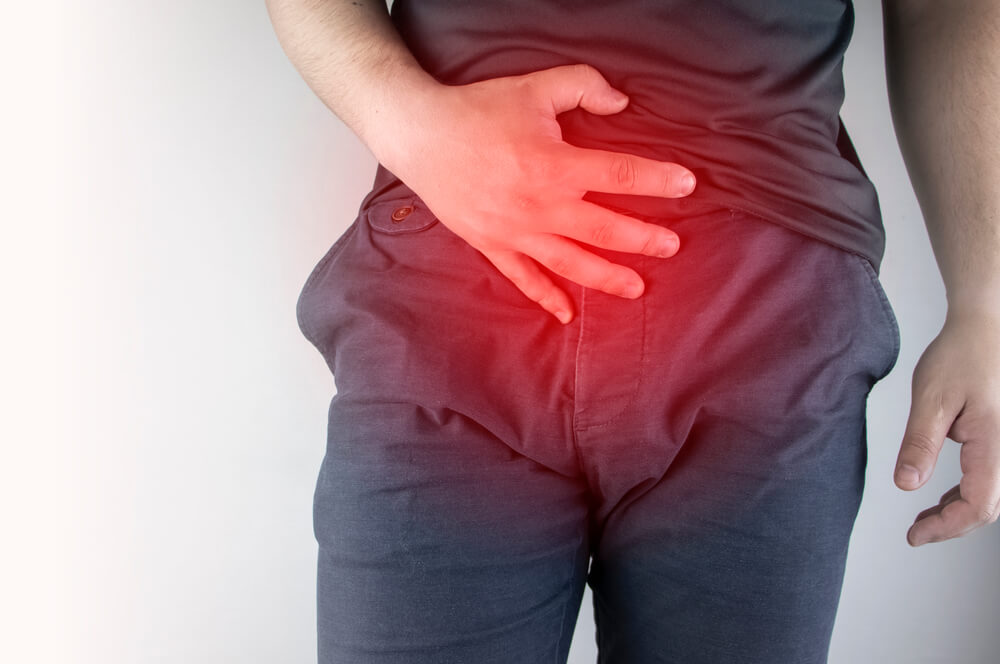Inguinal Hernia: Causes, Symptoms & Treatment
An inguinal hernia is a protrusion of abdominal contents through an acquired or congenital weak area or defect in the abdominal wall just above the groin. In an inguinal hernia, a portion of the intestine or some other intra-abdominal organ protrudes through an opening in the abdominal wall into the inguinal canal. An inguinal hernia extends into the groin and may extend into the scrotum. In the majority it occurs more often in the male population. There are two types, direct and indirect, depending on exactly where the hernia occurs.
Inguinal Hernia Causes
Several potential risk factors can make a person more prone to developing an inguinal hernia. A possible cause or risk factor is weakness in the abdominal wall. Pressure on the weakened point can cause the inguinal hernia to appear. Some other risk factors are:
- genetic predisposition
- early childbirth
- cystic fibrosis
- development of an inguinal hernia in the past
- chronic constipation or chronic cough
- the male gender
- obesity or increased body weight
- pregnancy
Inguinal hernia: Symptoms
Symptoms of an inguinal hernia may not appear at first. One of the first symptoms may be a feeling of heaviness or pressure in the groin. It presents as a visible or easily palpable lump in the groin, often with discomfort during vigorous exercise or heavy lifting. Other symptoms may appear as the hernia grows. Some of the symptoms of an inguinal hernia may include:
- small lump on one or both sides of the groin that may disappear when lying down
- the scrotum may appear enlarged in male sufferers
- pressure or weight in the groin
- weakness in the groin
- pain and burning sensation at the site of the swelling
- sharp pain or discomfort that increases when lifting heavy objects, coughing, bending or exercising
There is a risk that part of the intestine becomes trapped in the abdominal wall, which can cause intestinal obstruction or even loss of blood flow to that part of the intestine. If the blood supply to the intestine is not quickly restored, the protruding part of the intestine may become necrotic. This condition causes constant, gradually increasing pain, nausea, vomiting and fever, and requires immediate medical attention.
Inguinal Hernia Diagnosis
The diagnosis of an inguinal hernia is made by carefully taking the patient’s history and performing a physical examination of the area. Thus, the point of the hernia is located and its size is perceived. In some cases, the attending physician may need to confirm that the lump is due to an inguinal hernia by using an ultrasound, x-ray, or CT scan of the area to rule out other conditions and check for a hernia.
Inguinal hernia: Treatment
Surgery is the main option for repairing an inguinal hernia as it is unlikely to come back on its own. To treat the condition, there are two surgical options, open surgery and laparoscopic inguinal hernia surgery. In open surgery, a large incision is made in the abdomen to place the intestine in its original position and then the incision is closed with stitches.
In the laparoscopic operation of inguinal hernia, which is applied with excellent success rates by General Surgeons in Athens, after general anesthesia is administered to the patient, 3-4 microscopic incisions are made, through which carbon dioxide is first injected into the abdominal cavity to increase its volume and offer the surgeon the necessary visibility inside it. An instrument called a laparoscope is then inserted through one of the incisions, which is used to examine the affected area. A laparoscope is a small tube with a light and camera at one end. Special surgical tools are then inserted through the remaining incisions and push the protruding intra-abdominal contents back into place, while reinforcing the weak point of the abdominal wall with a special synthetic mesh. The incisions are then closed with stiches.


